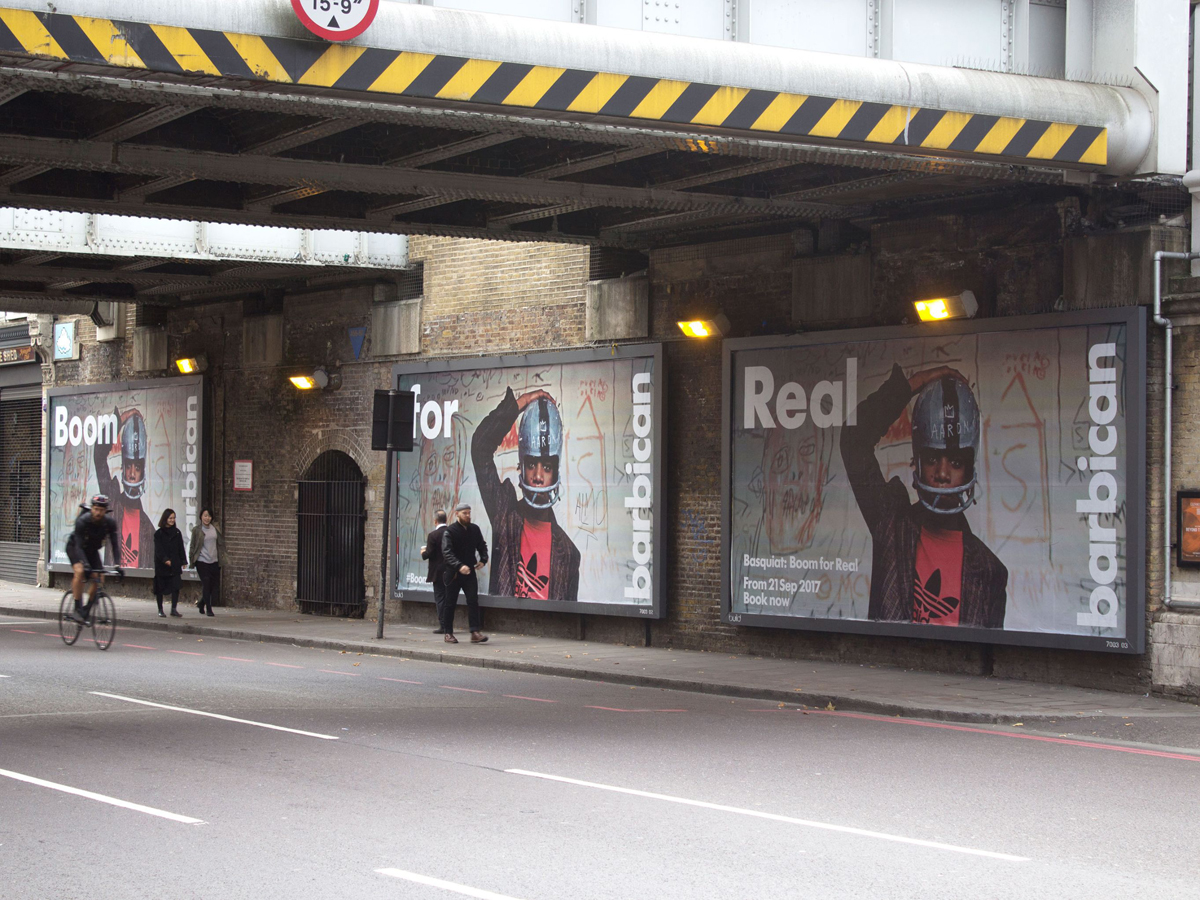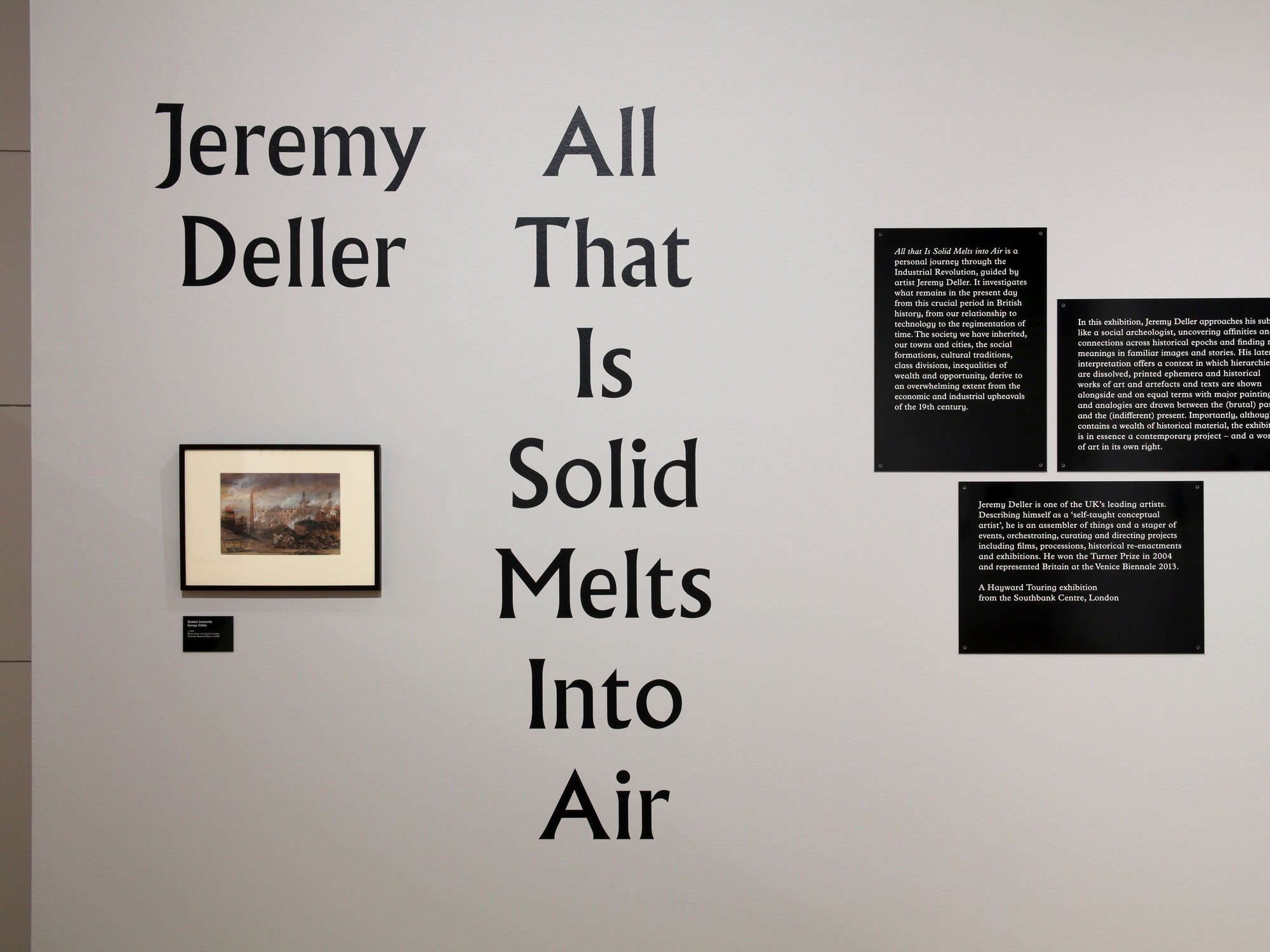
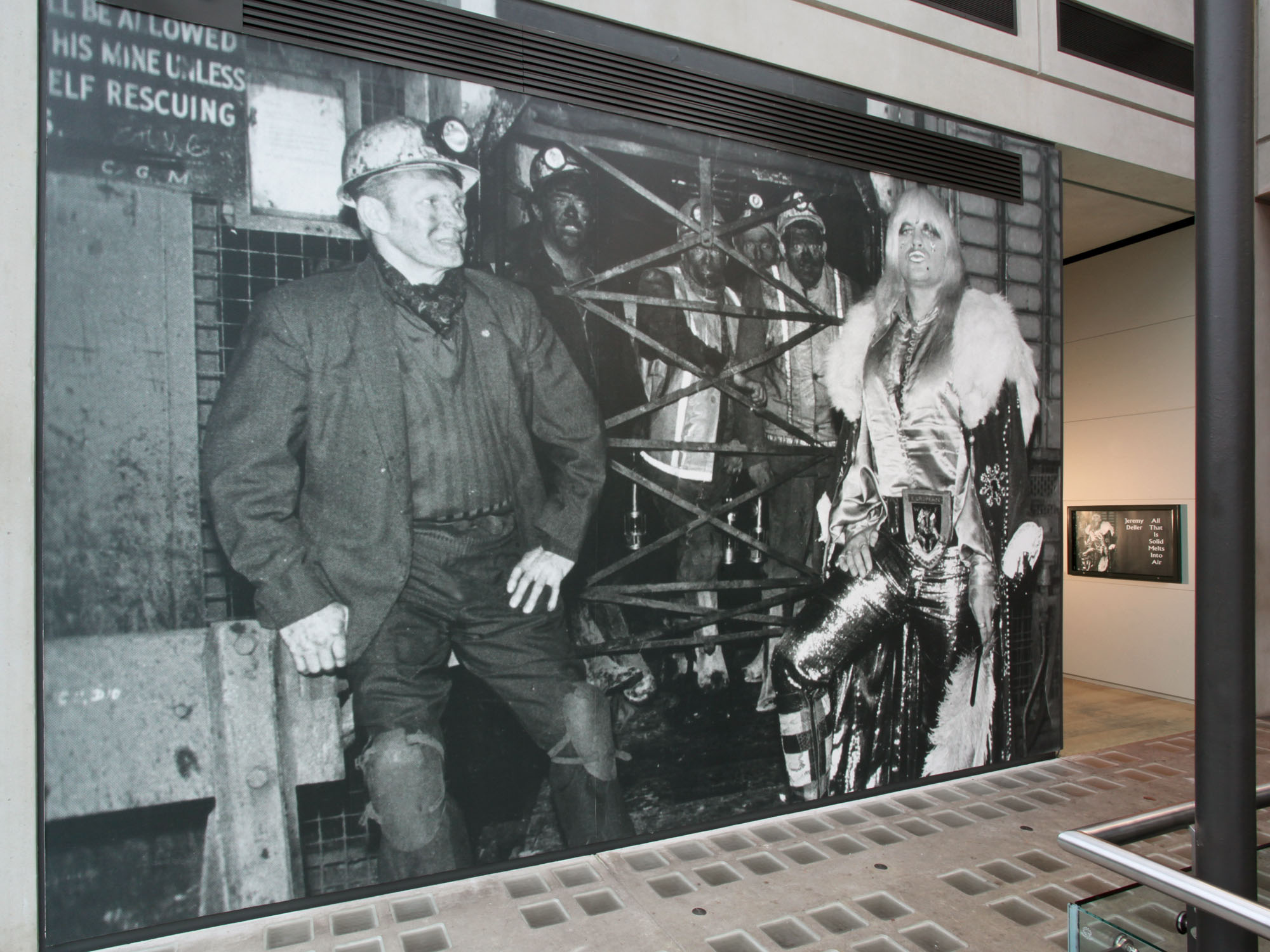
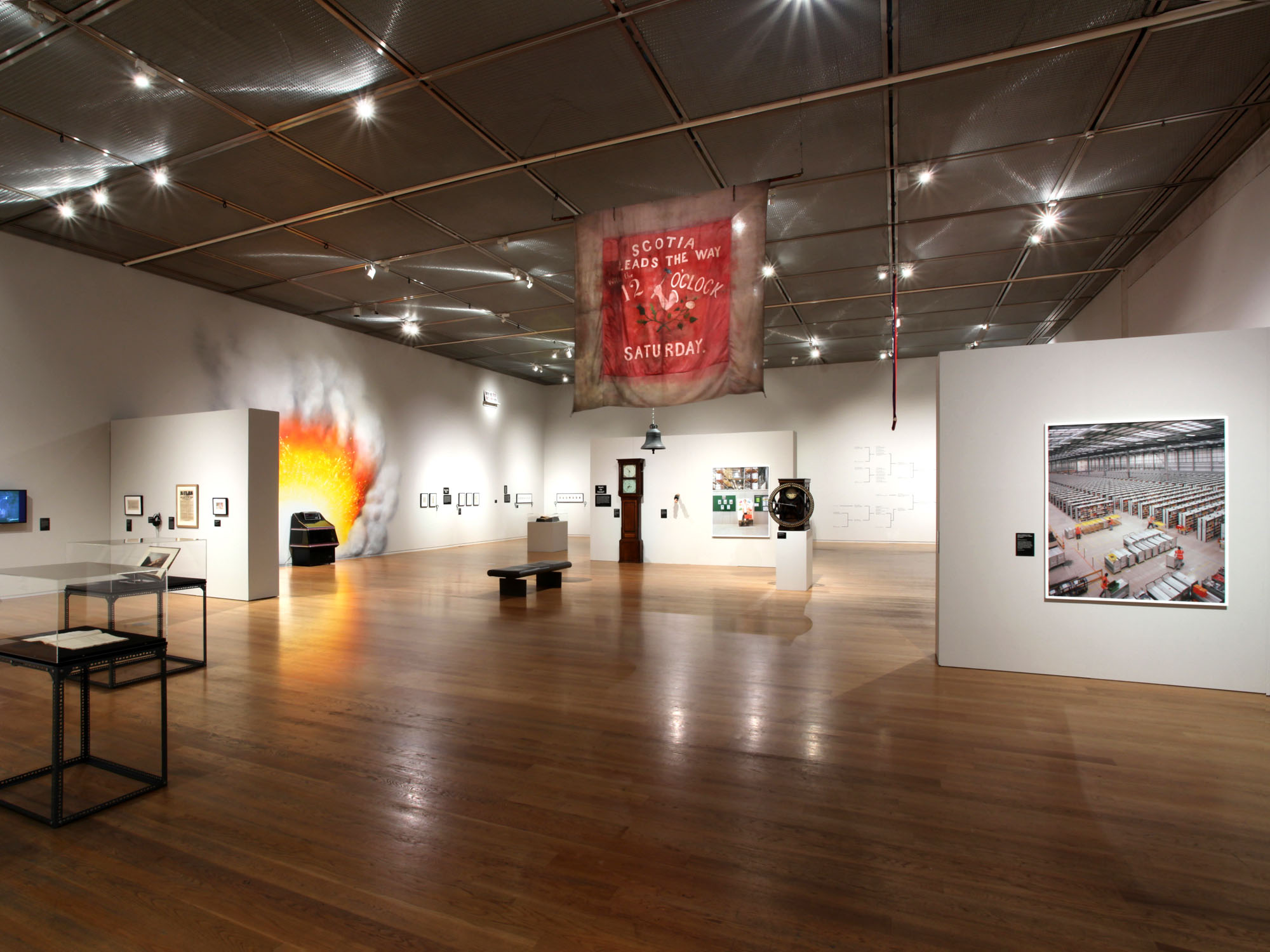
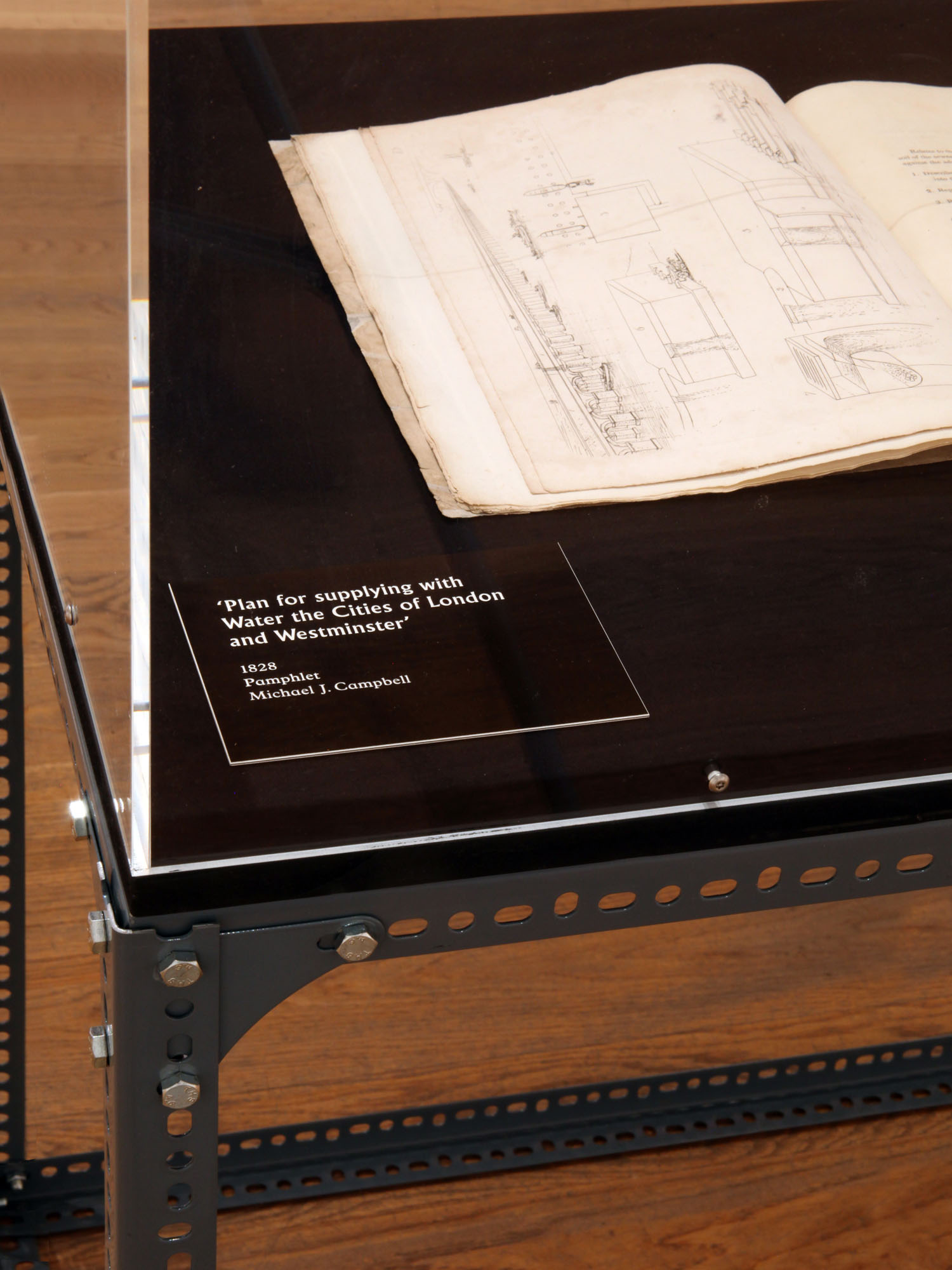


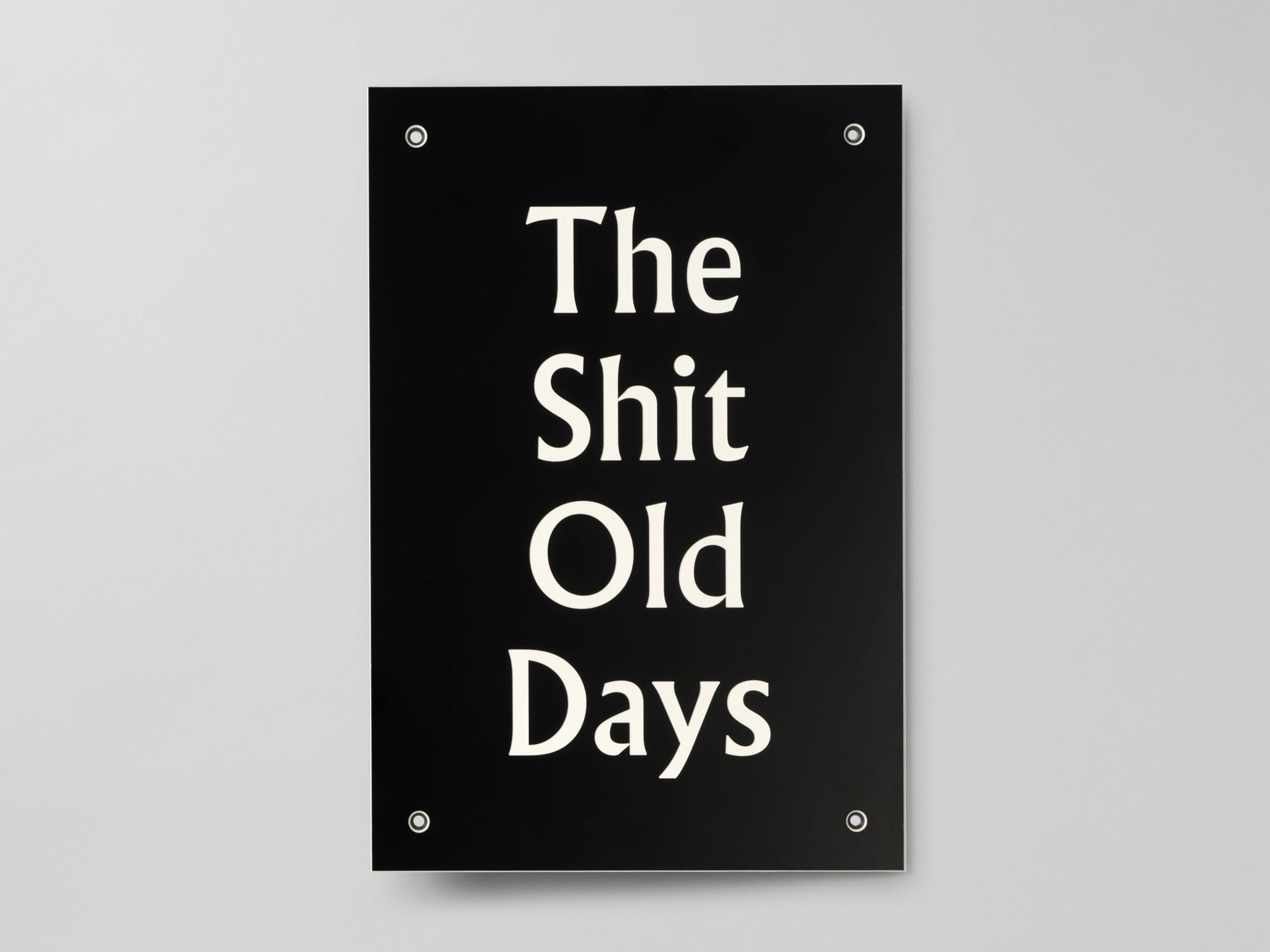
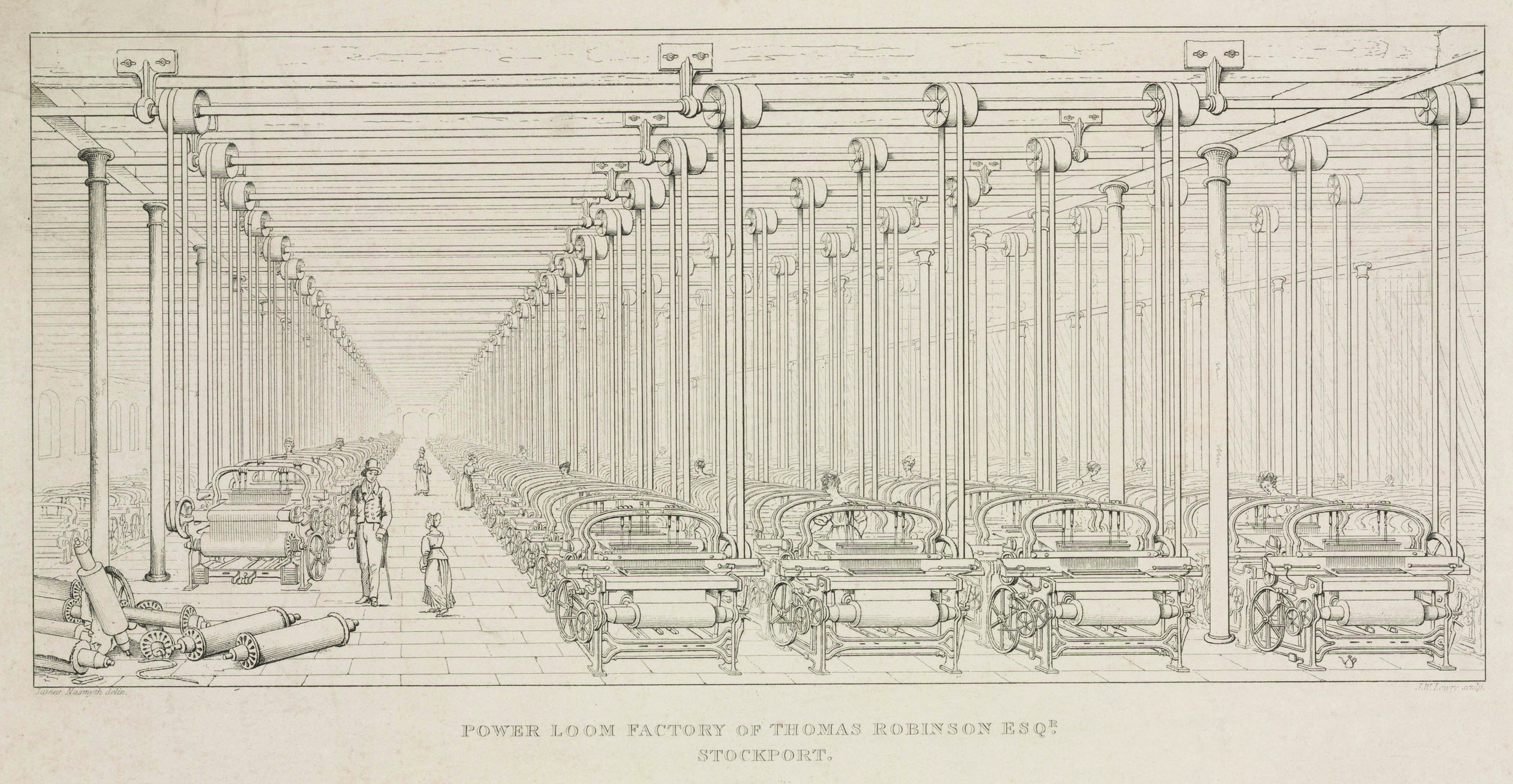
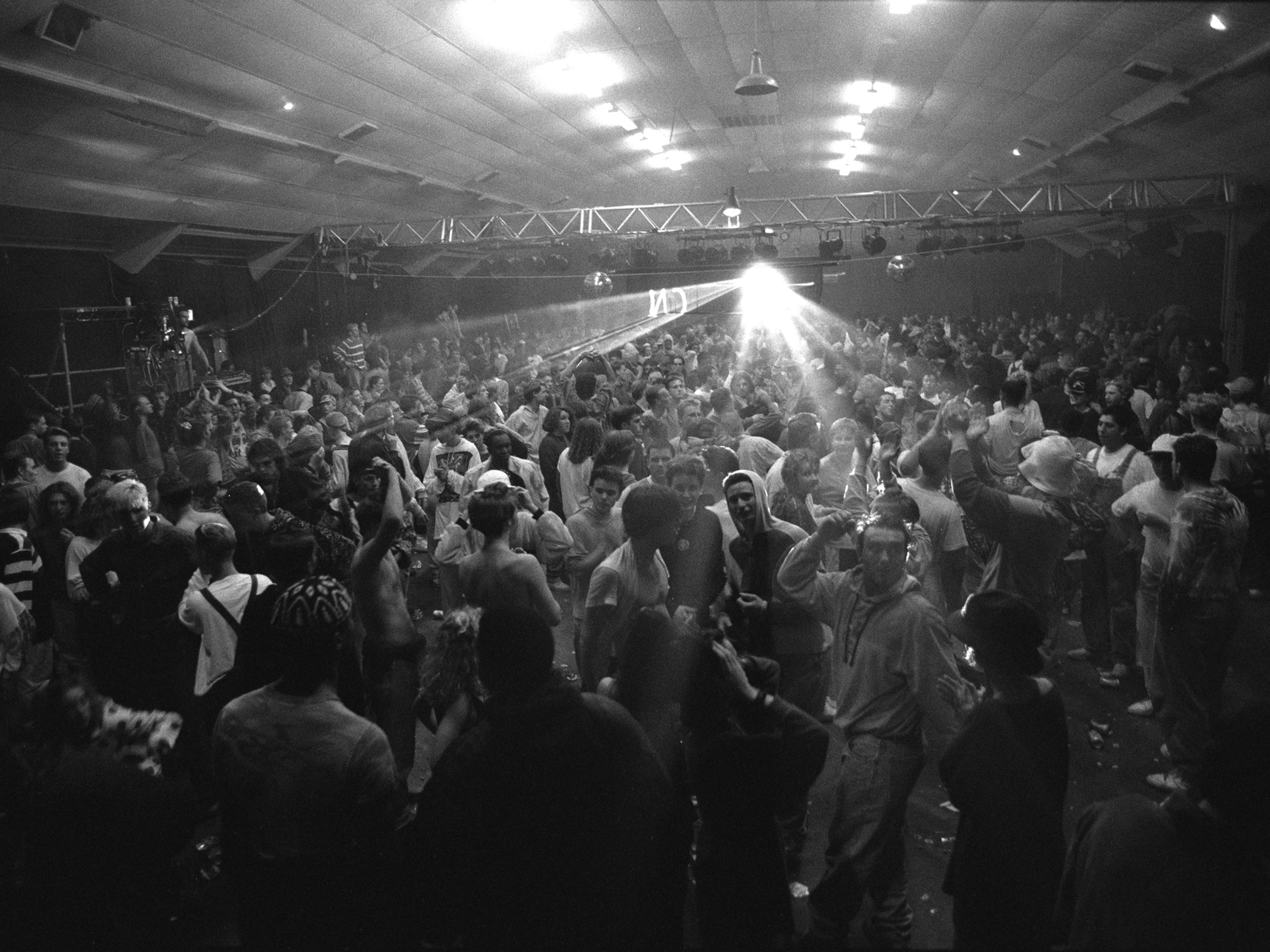

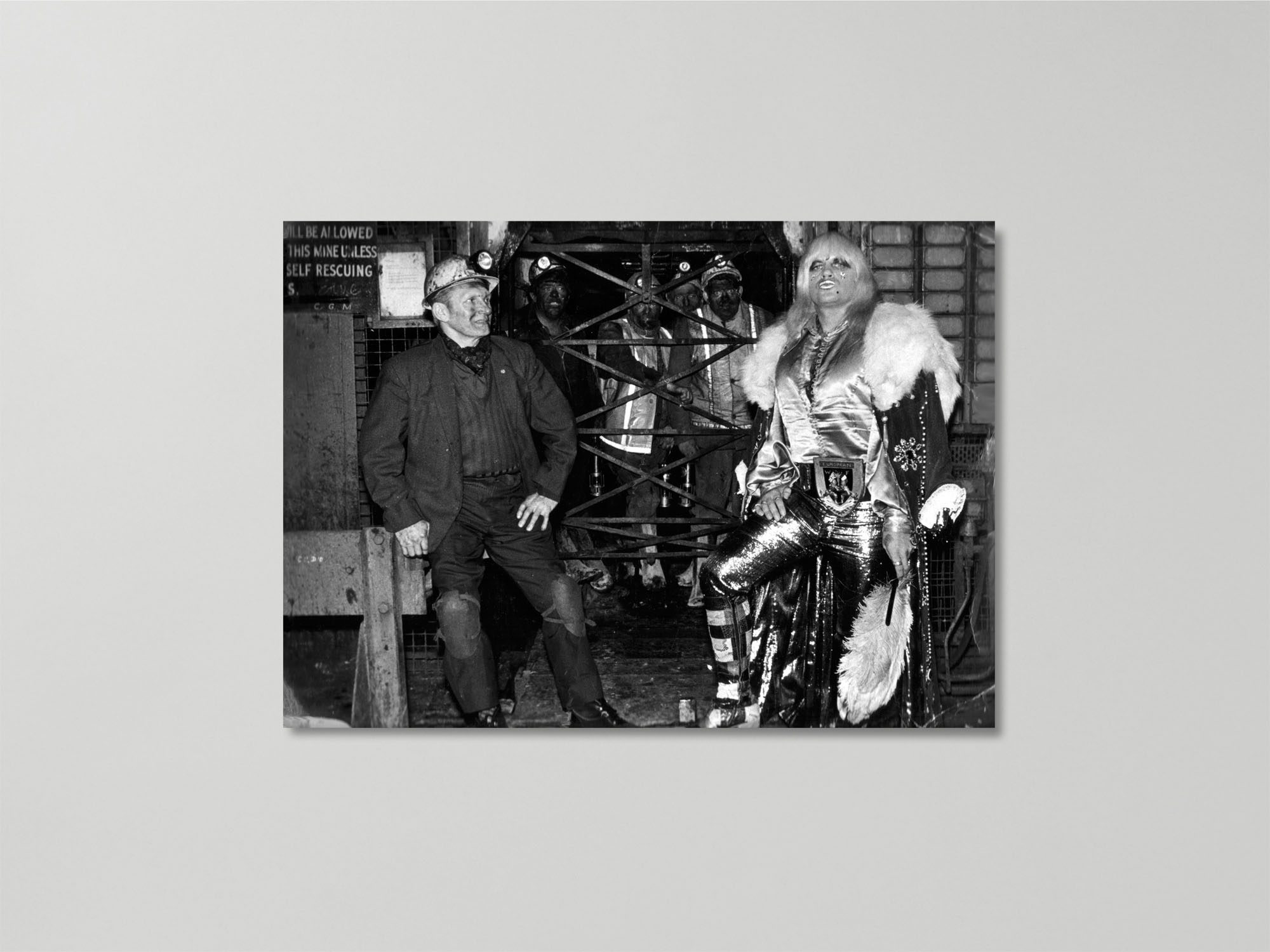
All That Is Solid Melts Into Air was an exhibition curated by Jeremy Deller for the Hayward Touring programme in 2013. The show examined the impact of the industrial revolution on British popular culture, combining contemporary exhibits including music, film and photography with a vast range of 19th-century images and objects.
We worked closely with Deller and the curatorial team at Hayward Touring to develop a structure for the exhibition’s diverse and challenging contents. Interpretation panels formed conversations round the objects on display, fabricated from engraved traffolyte plastic – a material more commonly seen on industrial machinery and municipal signage. This created a durable signage system that could withstand the repeated re-hangs of a touring show. The woodcut-style serif typography used on these panels, Berthold Wolpe’s Albertus, was chosen to emphasise the exhibition’s key themes of cultural contrast and the interplay between industry, craft and popular culture.
The exhibition title is taken from a passage in The Communist Manifesto (1848) by Marx and Engels: 'Constant revolutionising of production, uninterrupted disturbance of all social conditions, everlasting uncertainty and agitation distinguish the bourgeois epoch from all earlier ones… All that is solid melts into air, all that is holy is profaned, and man is at last compelled to face with sober senses his real conditions of life, and his relations with his kind.'


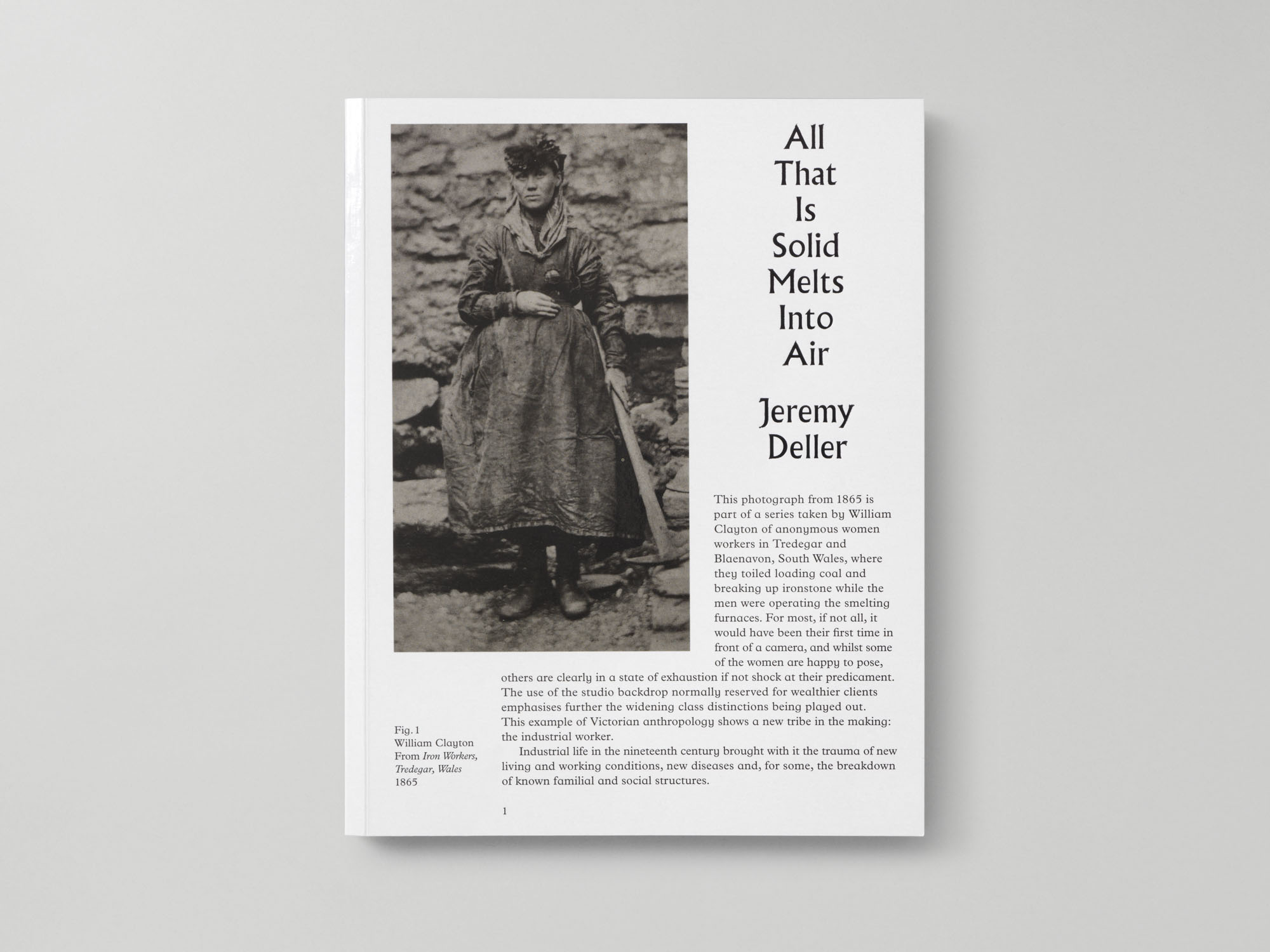


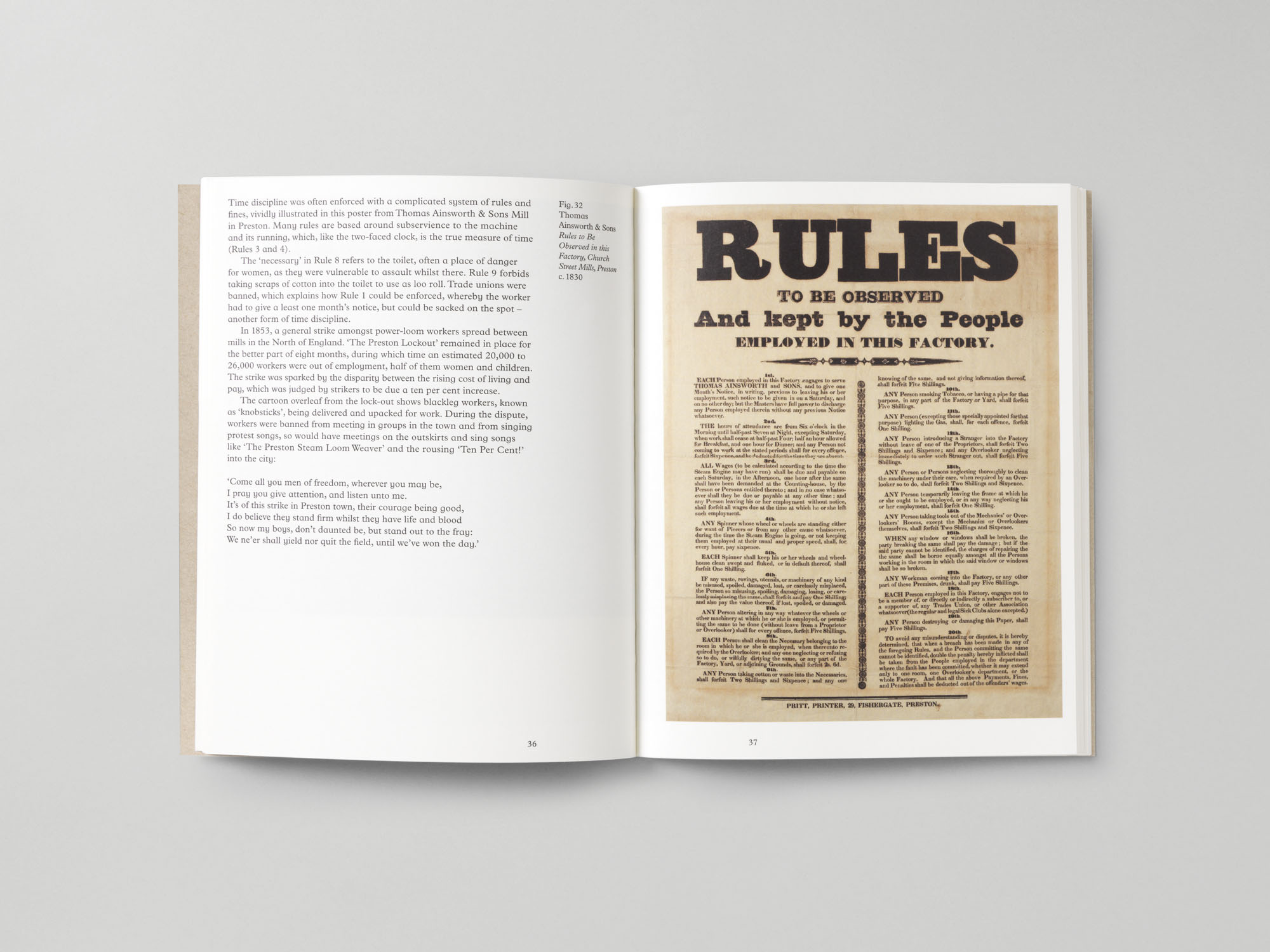
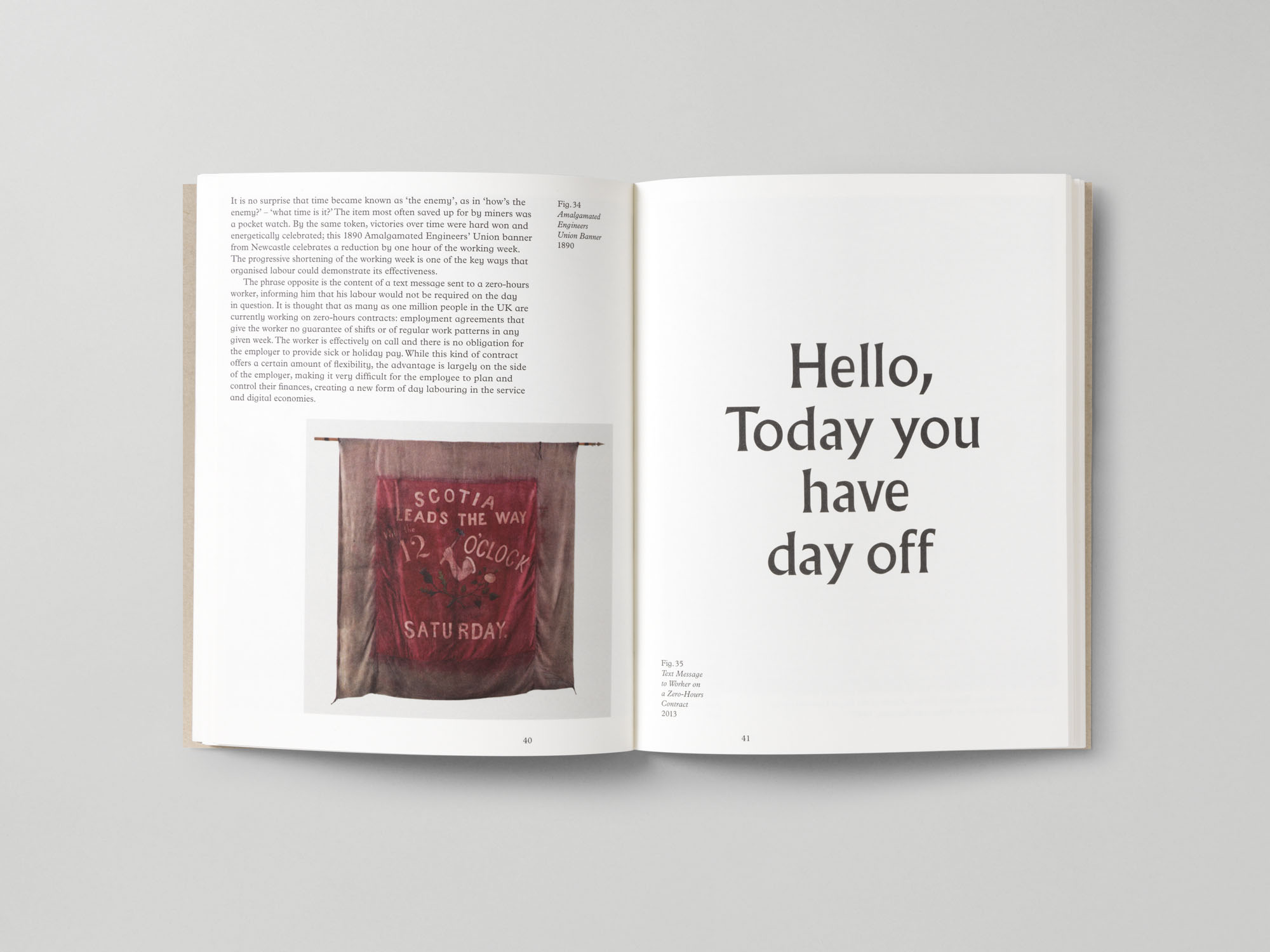
This 96-page softcover book, published by Hayward Touring, accompanied the Jeremy Deller-curated exhibition All That Is Solid Melts Into Air in 2013. We worked closely with the curator and the editor as the content evolved, to create a conversational pace to the book which drew out the connections between exhibited works and artefacts.
The content of the book follows a parallel narrative to that of the exhibition, exploring in more depth the origins and implications of the exhibits. The design took cues from Ways of Seeing (1972) by John Berger, with the images closely interwoven with the text to create a single narrative; the text begins on the cover of the book in much the same way. Alongside historical images and more recent photography, it also incorporates reproductions of some of the works created especially for the show, including the large-scale family trees and typographic banners.





